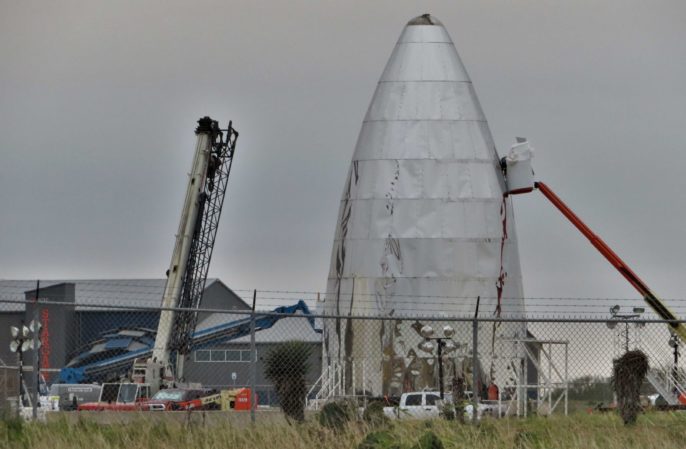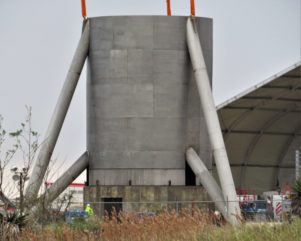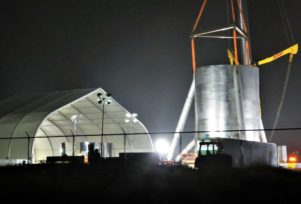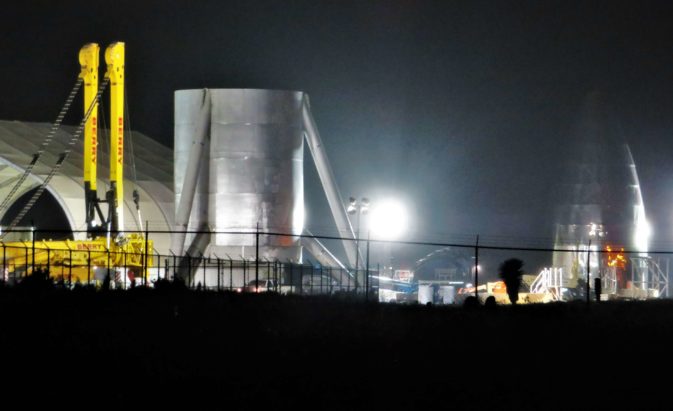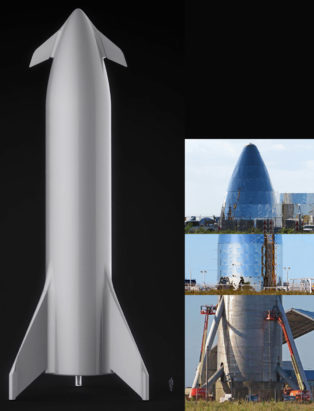
Well illustrated by recent drone photos of SpaceX’s up-and-coming Boca Chica, Texas facilities, dozens of SpaceXers and local contractors have congregated at the company’s Starship prototype work site over the last few weeks, progressing it from an empty tent and a collection of parts to a handful of large assemblies for what appears to be the first full-scale Starship hopper.
Much like Falcon 9’s Grasshopper and F9R (Reusable) hop test articles, this ungainly Starship hopper – standing an impressive 9m (29.5 ft) wide and ~40m (131 ft) tall – appears all but guaranteed to become the first integrated BFR hardware to take flight, hopefully supporting a productive series of low-altitude hop tests from a roughly-prepared South Texas pad.
Looks like our boys are getting a well deserved rest day but by the look of the crane placements. Seem they’re going to have one busy day tomorrow and boy check out those buffs.😃📸🚀 pic.twitter.com/54VpThlnmg
— Austin Barnard (@austinbarnard45) December 30, 2018
Since SpaceX CEO Elon Musk took to Twitter to provide a number of updates on and photos of the company’s dramatically refigured approach to BFR (now Starship and Super Heavy), employees and local contractors have been working almost around the clock to keep building the first full-scale, integrated Starship test article. To be dedicated to low-speed, low-altitude hop tests, Starhopper has been a spectacle and scandal from the start thanks to an unshakable visual aesthetic reminiscent of 1950s science fiction or an elaborate and slow-burning April Fool’s prank.
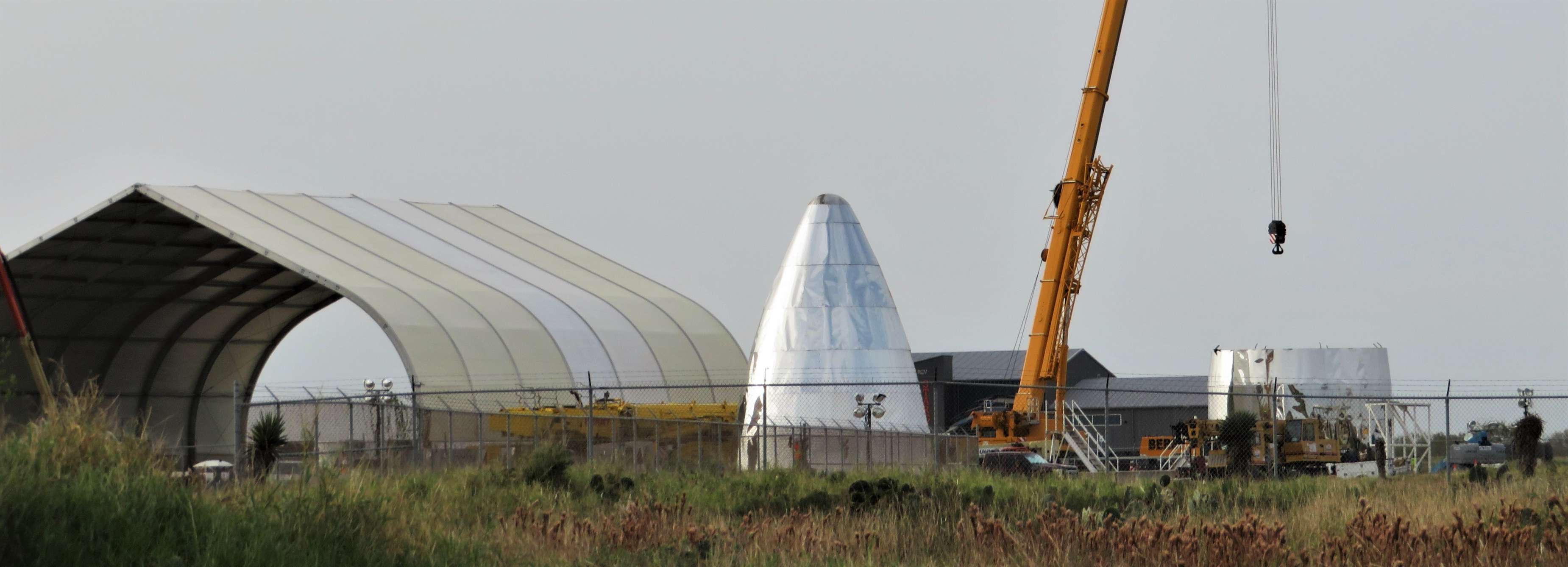
As of now, several dozen tweets and tweet replies from Musk in just the last week offer extensive support for the unorthodox new design – replacing carbon composites and an ablative heat shield for a new stainless steel alloy and liquid cooling – while also firmly indicating that the object taking shape in South Texas really is a Starship hopper that will eventually take to the skies on a pillar of Raptor engine exhaust. Those inaugural hop tests could apparently begin as early as March or April 2019. Given Musk’s statements, it seems that this highly unusual Starship hop test program simply cannot be judged accurately by its cover, at least not easily.
Even for SpaceX, building an aerospace-grade prototype of a massive orbital spaceship outdoors – adjacent to soggy Texan marshland and Gulf of Mexico sea spray, no less – is utterly and completely unexpected, especially in an industry where rocket hardware is routinely fabricated indoors, if not in medical-grade clean rooms. The most likely explanation here is that we are seeing something more akin to the aeroshell or cocoon of a Starship hopper, with a huge amount of thought and debate ultimately landing on this oddity as the fastest, most affordable, and most data-rich path forward for full-scale BFR testing.
In this speculative instance, the sensitive liquid methane and liquid oxygen propellant tanks – as well as Starhopper’s triple-Raptor thrust structure and spaghetti plumbing – would be fabricated in SpaceX’s Hawthorne, CA factory or McGregor, TX test facilities before being shipped to Boca Chica for integration with the large structures already in work there. Those Raptors, propellant tanks, and a general program of fit-and-finish optimizations are next on the list of significant Starhopper-related events expected to occur within the next several months.
The latter task has already begun, showing up in the form of sheet metal refinement by way of essentially stitching together loose panel gaps between and within sheet-covered sections of Starhopper’s shiny silver nose. SpaceX workers also conducted the first move of the fully-integrated hopper’s base section, previously built and then sat atop a ready-made concrete stand that may or may not have come from a water tank design. While the move was slight, the base and nose sections are now roughly side-by-side along the apron of SpaceX’s temporary tent, where a third Starhopper hull segment is being built up.
2019 is going to be wild and March/April simply cannot come soon enough.
For prompt updates, on-the-ground perspectives, and unique glimpses of SpaceX’s rocket recovery fleet check out our brand new LaunchPad and LandingZone newsletters!


